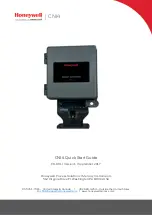
CRVW3 3-Channel Vibrating-Wire Datalogger
50
A USB cable connected to the CRVW3 device will override the power-off
condition (powering up the radio if necessary) and keep the radio on/active for
as long as the cable is connected.
When the radio has been off for long periods of time, issues such as PakBus
discovery time should be considered before making a radio connection to the
device, such as with automatic/scheduled collection from within
LoggerNet
.
Using the
Radio Power Schedule
tab is especially important for a CRVW3-
RF451, as the RF451 radio requires much more power than the RF407 option.
For the CRVW3-RF451, the
RF Transmit Power
setting should
be chosen to provide for stable communications at the lowest
possible level that works properly in order to conserve power. This
will allow for the longest possible operation time under adverse
weather conditions. An unnecessarily high value for this setting
could waste energy and shorten the length of time that
communications are possible, when the device experiences
adverse weather conditions or when snow is present on the solar
panel.
Similarly, the
Radio TX Power Level
setting on the CRVW3-
RF407 should be strategically chosen to conserve power, yet still
allow robust communications.
8.2.10 Sealing the CRVW3 Enclosure
Once you have completed the installation of the CRVW3 and confirmed proper
measurement and communication functionality, you should seal the enclosure.
This will ensure optimal protection and maximize operational up-time. Proper
enclosure sealing helps to avoid unwanted entry of water or humid air, and
provides isolation from other environmental factors.
Ensure that the enclosure is mounted so as to minimize water exposure to the
sensor glands, antenna connector, and ground lug (typically these items should
face downward).
Ensure that the cable entry points are installed and tightened properly. Ensure
that the humidity monitoring card and desiccant are in place (Section
Humidity Monitoring and Control
(p. 40)
). The CRVW3 enclosure includes a
small vent to allow for changes in pressure. A gore patch prevents water from
entering the enclosure through the vent.
Ensure than nothing impedes the lid from closing properly (USB cable
removed, RF diagnostic cable removed), then close the lid of the enclosure and
secure the latch. A padlock can be used to protect the closed lid from
unauthorized access, if desired.
NOTE
Summary of Contents for CRVW3
Page 2: ......
Page 3: ......
Page 7: ......
Page 13: ...Table of Contents vi ...
Page 121: ...Appendix A Updating CRVW3 Firmware A 4 ...
Page 131: ...Appendix E Engineering Output and Calibration E 4 ...
Page 133: ......
Page 134: ......
















































